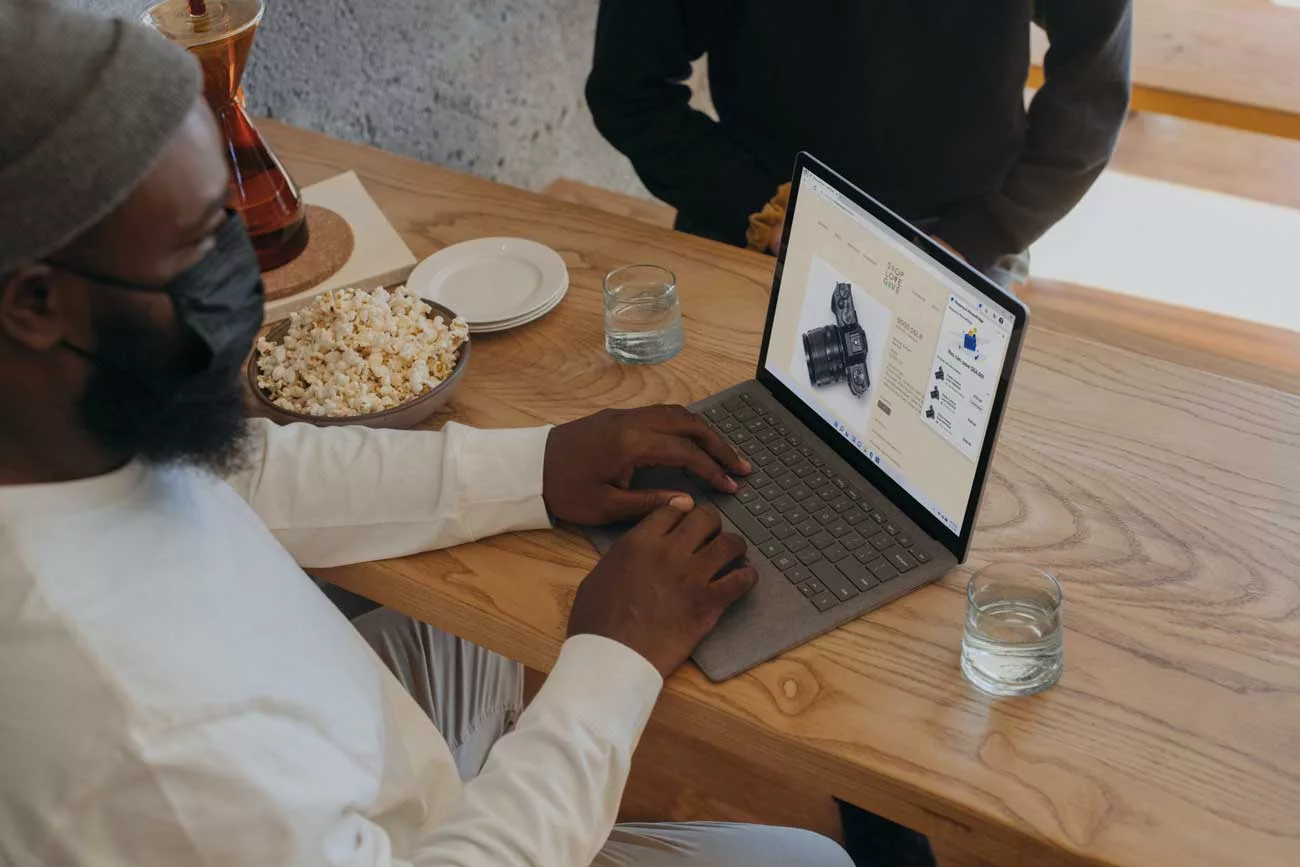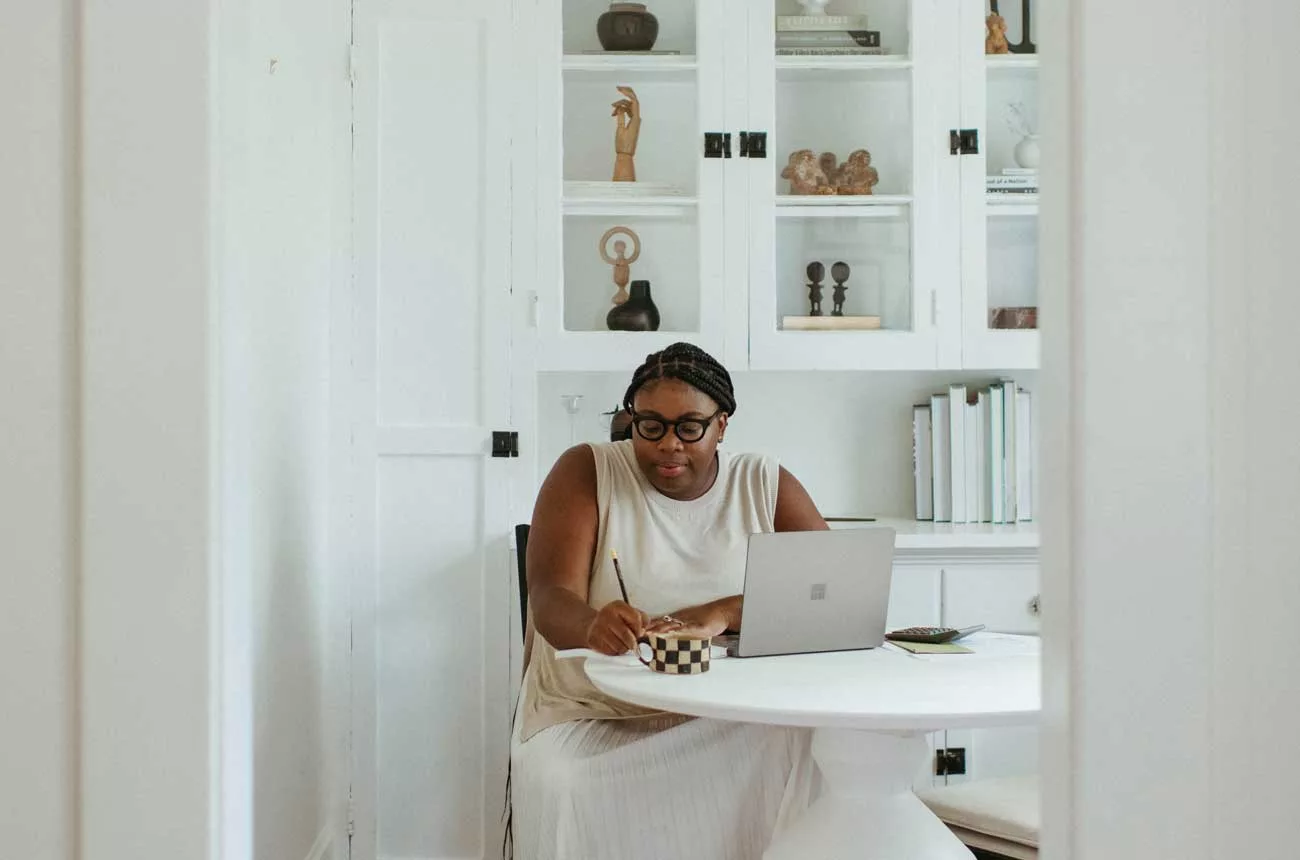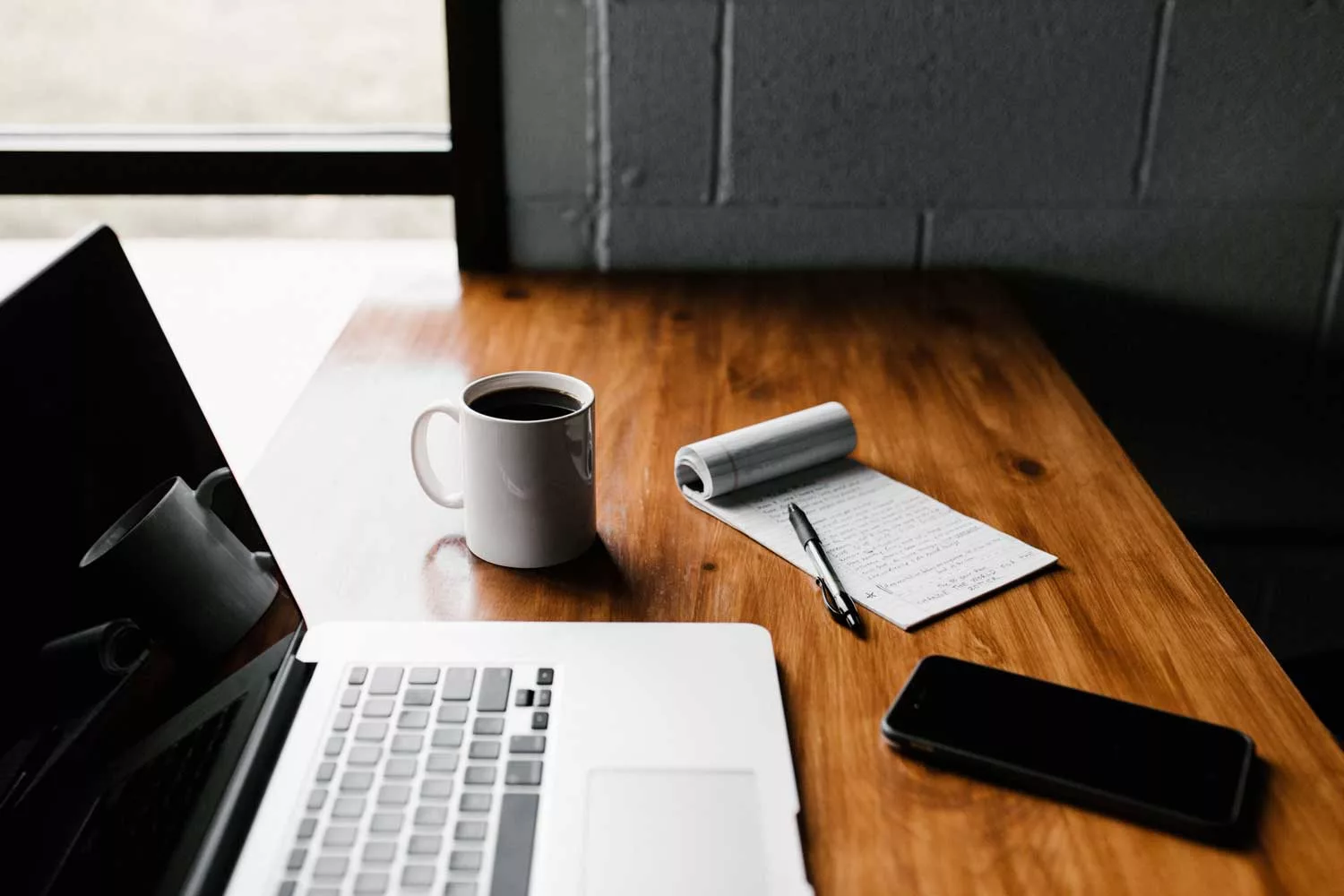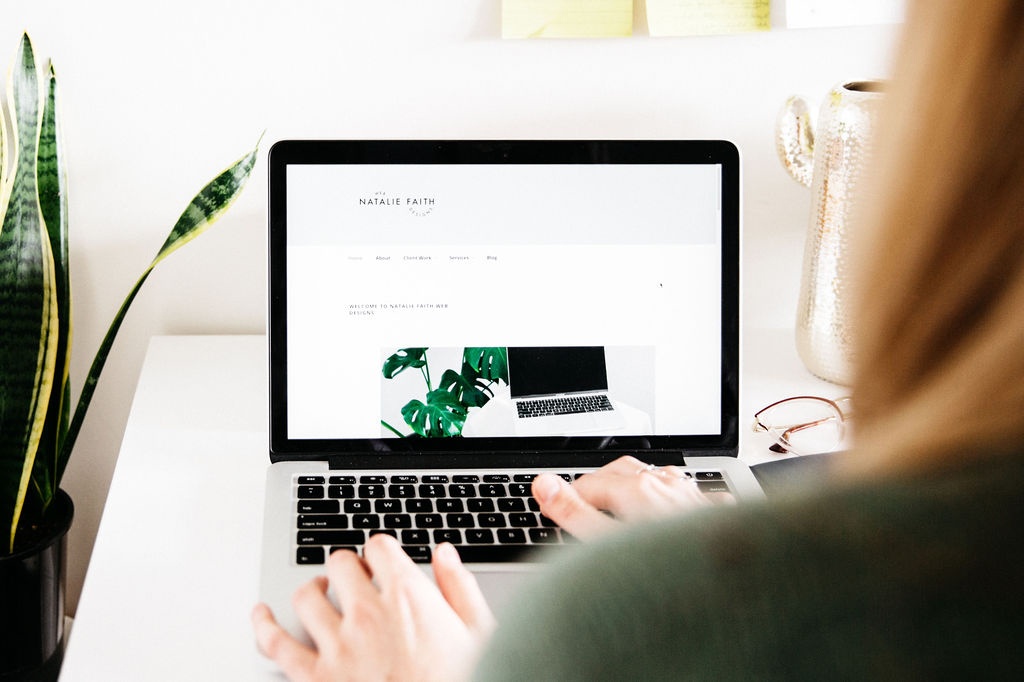In 2023 having an accessible website is a must for all business owners, whether you built your website yourself, or hired a designer making sure your website is easily understood by someone with a disability, visual impairment, or some one who is colour blind is essential.
Having a thoughtful and considerate website design is super important. So I’m going to share with you three easy ways to make your website accessibility-friendly, why accessibility is so important for your business, improve the experience for those visiting your website, and how these changes benefit everyone online.
Why Accessibility is Important for Business
Accessibility is not just an ethical and moral issue; it’s a legal issue too. Literally the government is telling you to make your business accessible to all people viewing it. You are required to “ensure information and services are provided in a non-discriminatory accessible manner”.
So how can you check to see if your website meets these guidelines?
Here’s some quick items to check:
Have you described the images on your website within your image alt tags?
If you are using media on your website are there captions or transcripts available?

Is your website’s site structure built so content is displayed in a hierarchy so that a screen reader can logically read the website?

What is the design like? Are you using web-friendly colours and considering the colour pairings? Pink on red can be hard for some people or screens readers to see and therefore your message is lost.
If you’re not sure what any of this means, than this great tool, or this one, can scan your website and let you know areas to improve on.
By making your website accessible, you are opening your business to a wider audience who have been frustratingly unable to view or understand what your business online without someone elses assistance. In Australia and around the world 1 in 6 people have a form of disability. Which means someone in your circle is currently unable to properly access information online. So by making your website accessible, you are not only complying with regulations and algorithms, but allowing your community the opportunity to access the same information as you can online.
Think of your favorite website. Is it user-friendly? Can all your friends access it or is there an “issue” they come across or do they check ot of the conversation completely because they feel excluded? If this is happening, contact that website owner and tell them about the difficulties your friend is having, erge them to fix it asap so you can all enjoy visiting their site.

Let me tell you about a client of mine, she shared with me about a website she used to sell her products on. It was a well-known platform within her community and she was making good money from selling on there direct to her ideal customers.
That is until they did an update to their website, which was harmful to users. I don’t want to sound dramatic when I say harmful but it was. People couldn’t view the website without getting headaches or migraines and some people reported of having seizures. When the website owners realised this was happening they made a change but only after many complaints and people leaving the platform (my client included).
This is why I urge you to consider accessibility. Imagine the positive experiences and engagement you could be creating when everyone can read and understand your website. Making your website accessible sends a message to your audience and community that you care about everyone visiting your website, not just those who look like you.
Why Accessibility is Important for Users
Accessibility ensures that everyone can access the information on your website, removing an accesibility gap thats existed on the internet since it’s conception to benefit those who look like the people who built it; able-bodied people. For users with disabilities, including visual or hearing differences, some simple updates to your website allows all people to navigate and interact with your website, knocking down the barrier they previously faced.
By adding user-friendly design to your website, you will allow those who were unable to understand your website previously the ability to find the information they were searching for. Your website will increase a users independence online, discover new topics or trends, connection with others and learning opportunities. With these small tweaks, users with disabilities will now able to navigate and interact with your website without the assistance of others. #freedom
And the beauty of an accessible website is that it’s user-friendly for all people and overall benefits everyone in society. By following accessibility guidelines and using an accessibility auditor, websites are more likely to have well-structured, clear and easy-to-read content, easy-to-navigate pages, accessible brand styles, and a logical user-friendly layout.
This website design benefits everyone viewing your website, because if your website visitors can easily find the information they’re looking for with ease, the more sales, leads and followers you can gain as a business.
“Accessible, User-Experience Design Increases Everyone’s Experience Online”

User-Experience and How Accessibility Benefits All Website Users
So far I’ve mentioned a few tips you can implement to ensure your website is accessible and designed in a user-friendly way. Below I have outlined each of these points so you know what your website needs to improve on to create an enjoyable experience for all users visiting your website.
What actions should you be taking to make your website accessibility-friendly?
Well-structured
The way most screenreaders read a website is is a structural why, so when designing your website usually website designers have the main heading labeled as Heading 1 and as you go down the page the heading numbers decrease. This allows for a screenreader to see what order to read the content in.
Although websites like squarespace only have 3 heading types and usually styled is specific fonts so if a non-website designer is styling their website, they are unknowingly put heading types in different orders confusing screen readers and their users.
This can happen on many other website builders that non-website designers are styling themselves, so an accessibility audit is critical for anyone who’s website was self-built.
Clear, easy-to-read content
Accessible websites need content that is easy to read and understand. This means no jargon, acronyms or complex language that would create a barrier for someone to understand what your business does or can help them. This will benefit everyone visiting your website, and also make your business feel more approachable.
Easy-to-navigate
There is nothing more frustrating when you go to someone’s website to join a program or download the freebie they’ve been enticing your with, only for you to get there and not see it on their menu, nor their homepage, hit a 404 error page and just want to escape
Accessible websites are often clean website with less distracting objects flying around, have easy-to-navigate pages, create an enjoyable, stress-free experience and make it easy for users to find what they are looking for. This design thinking benefits everyone online, especially those who are excited to book in with you or download the great freebie.

Accessible brand styles
Learn form the lesson my lovely client shared with me. Brand styles are important for many reasons and one of them being your audiences health and wellbeing.
The other reason is so screen readers can easily understand your well created content and so can anyone with vision impairment whether that be decrease in focus or visibility on text or colour blindness.
Using colour text on an opposing colour will allow your audience who have different vision needs to you be allowed to read your content and become raing fans of your products, services and other offerings.
Logical user-friendly layout
Some people think logical is boring, there are too many rules or it’s unimaginative, but I like logic. It is reliable, predictable, it saves time and reduces stress.
If we know a website will have a menu at the top, and I click on a page I know I will go where I want to. If I see a button that says “Learn More” I know I’ll be redirected to a location that I can learn moe about a subject matter. Logical user-friendly layouts allow you to have an enjoyable “suprise-free” experience on someone’s website.
Same on mobile. If I am on the go and wanting to look someone up online, I want to know when I reach their website I can easily read, view and find the information i need. I know that when i tap the three line (hamburger) icon at the top of the page the menu will open, and if I click on the X it will close. Websites that consider asscesssiblity are often optimized for mobile, making it easier to view and navigate on smaller screens (none of this zooming in and out business). Mobile friendly website’s aren’t a new thing, so if you’re website isn’t yet optimised for mobile, you need to jump onto this ASAP. Here’s why;
88% of Australian’s own a smart phone, on a daily basis we use our phones over 5 times a day to make a search, check social media, read the news or use another app. Research deloitte conducted in 2019 shared that users check their phones every 30 minutes, and I can only imagine after the pandemic this would only have increased.

So what does all of this mean?
When making these updates to your website so it’s accessibile remember who your end users are and that not everyone will experience your website the same why you do.
By adding empathy to your website design and user-experience you will see more visitors coming to your website because they can now understand it the way you intended. Because when it’s accessible for all people, it improved the experience for all people and will in-turn increase visitation to your website, improve your reputation, and reach a wider audience that you hadn’t considered before.
By following accessibility guidelines, you can make your website more user-friendly for all users, regardless of their abilities so we can all enjoy the benefits of being online.
I hope you enjoyed this blog post and my advice has helped you with your business journey. It can be hard building a business, but I know you’ve got something really beautiful to share!
If you need any help creating a beautiful website for your business, I have a custom service called A Brand Worth Sharing that will help your business grow online.
If you liked this blog post please share this with others who may enjoy it. You can also find me on social media via @nataliefaithwebdesigns on Instagram or Facebook I share more great tips for your online business on these platforms.




